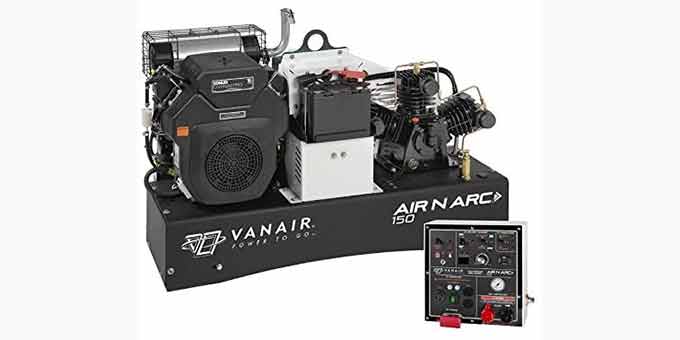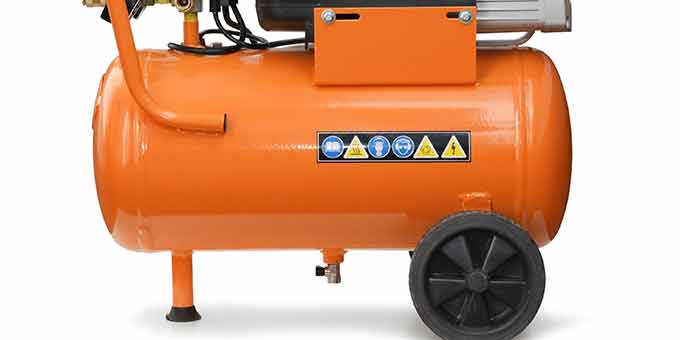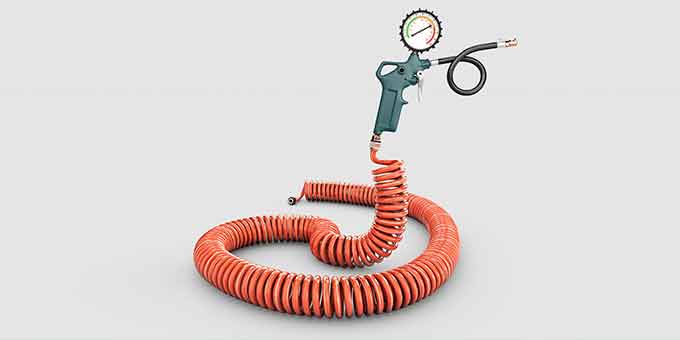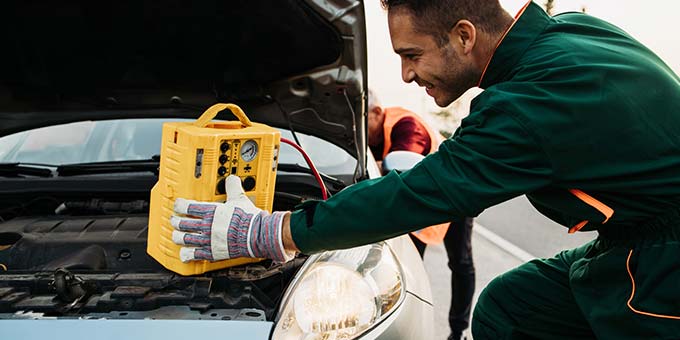There are so many tasks that are made a heck of a lot easier with the help of an air compressor, but how much does size matter? This guide aims to explain how the size of an air compressor affects the performance and break down how exactly to work out what is going to work the best for you.
What Are Air Compressors?
Air compressors are used to power pneumatic tools, anything from a nail gun or grease gun to an impact wrench, air ratchet, or jackhammer. They work by condensing air within a sealed tank to increase the output pressure.
You get pump-driven two-stage compressors and electric air compressors, and an incredible variety of air compressor accessories to use in many different tasks. The performance varies depending on the style and capacity, but they all follow the same idea.
What Sizes Do They Come in?
Most air compressors are measured in gallons (tank air capacity). You can buy a small electric compressor with a capacity of as little as one gallon, all the way up to mammoth pump-operated 200-gallon tanks.
The exact dimensions of machines are not what you need to focus on first, although it does affect how easy it is to store. Prioritize the tank capacity over the size itself.
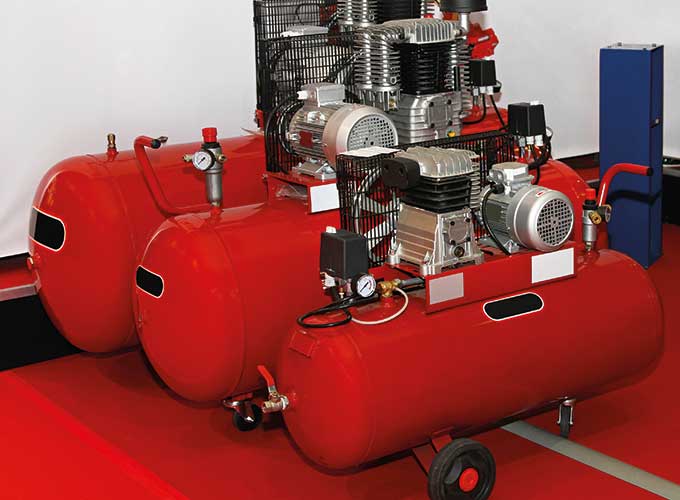
What Size Do I Need?
The best size air compressor is the one that can sufficiently handle all the tools you intend to use in one job without needing rest or refill time. Every pneumatic tool requires a different amount of compressed air to work effectively, so the ones you use have a huge impact on what size is the right air compressor for you.
To determine the best size air compressor, you should look at the PSI and CFM requirements of every air tool you plan to use. Once you know what the tank needs to handle, you can figure out how big it needs to be.
CFM Requirements
The CFM requirement refers to the air flow a compressor must provide to power. It stands for cubic feet per minute, meaning the output speed and air volume an air tool requires to work. How much CFM your pneumatic tools require determines how high your tank capacity and power need to be to complete a job.
Power tools that you use continuously have a higher CFM rating and drain a tank far quicker. The CFM ratings on tools such as nail guns or framers tend to be much lower.

Maximum PSI
PSI (pressure or pounds per square inch) describes how powerful an air compressor is. The max PSI is what a machine can deliver at peak performance but is not necessarily what it should operate at most of the time.
The PSI maximum is not always higher in larger air compressors, as some more compact models have been developed to deliver greater pressure and take up less floor space, so always shop around.
CFM and PSI go hand in hand when deciding what sized air compressor you need. You should always find a tank with a bit of wiggle room above the maximum levels you require. To give an example, if your air tool requires 4 CFM at 90 PSI, find an air compressor that comfortably delivers 6 CFM at 90 PSI. The rule of thumb is to add 50% CFM, so 3 CFM at 90 PSI would become 4.5 at 90 PSI 2 = 3 at 90 PSI, so on and so forth.
Air Compressor Buying Guide
The size of your air compressor is not all that matters. In fact, many of the following factors have an impact on how big it needs to be. Before you can fully know what size the best air compressor is for you, you need to consider the following air compressor features and details.
Style and Shape
There are four main air compressor styles: wheelbarrow compressors, hotdog compressors, pancake compressors, and a twin tank compressor. Twin tanks are popular mid-size compressors because they store more air without taking up more space. Hotdog air compressors are versatile and range from mini electric compressors to giant 200-gallon storage tank compressors.
Pancake and wheelbarrow designs also range greatly in air capacity and how much power they can achieve, but are generally excellent choices for car painting, use as a home garage air compressor for re-filling tires, or for power tool use on building sites.
Maximum Air Pressure
Air pressure is what these machines are all about at the end of the day. Without air pressure, air tools such as pneumatic framing nail guns, air wrenches, spray paint guns, and tire pumps simply do not work. The best air compressors have high maximum air pressure, meaning they can finish tasks much faster.
Tank Capacity
As we explained above, the air tank size you need depends on how much-compressed air, CFM, and PSI your air tools need to get the job done. An air compressor needs to hold enough juice to supply air volume enough for the task at hand.
Generally speaking, the bigger the tank capacity, the more air you have, and the more power you can use with your air tools before you need to stop and let the machine recover.
Weight and Portability
A big part of knowing what air compressor size you need is considering how much you need to move it around. If you want to keep it in your car for emergencies, a one or two-gallon tank that weighs less than 30 pounds is ideal. Working on a building site and need to run multiple tools in multiple places? Six to ten gallons are good for power and usually weigh less than 70 pounds.
If you require a serious amount of power and don’t intend to move it far, stationary compressors are what you need.

Noise Level
If you work in a residential area or have sensitive ears, you want to find a machine with a quieter operation. Regardless of the size of your air compressor is, you can always find models that actively combat high noise levels, so always look for the decibel rating. In general, a belt-driven air compressor is less noisy than a forward-driven design.
Ease of Maintenance
Some air compressors are far more difficult to maintain than others. Many small-size air compressor designs now use an electric motor, which is a lot less messy than large gas-powered compressors. If electric power doesn’t cut it for the heavy-duty tools you plan on using, opt for an oil-free pump.
Compatible Air Tools
Most air tools connect to any size air compressor as long as you have the correct attachments and adapters. Many models come with an air hose, nail gun, and various nozzles that work with multiple tools. Versatility is key, considering that most jobs require more than one tool.
Think about the common air tools you are likely to use the most and look for the size and style that works well with them.
You can see more details on our new article: Air Compressor Buying Guide
Our Top 3 Picks
Best Large Air Compressor: Stealth 20 Gallon Air Compressor
Ultra-quiet, oil-free, and built to last the test of time: the Stealth 20 Gallon Air Compressor is our top pick for anyone looking for a higher capacity tank. It is not only powerful with a 1.8 horsepower engine and a PSI peak of 150, but it is also fast, refilling in as little as 70 seconds.
This is a versatile machine compatible with impact wrenches, angle grinders, pneumatic drills, and so much more. It is a hefty tank- weighing over 120 pounds, but it comes on a reinforced steel frame and rubber wheels for easy movement.
Best Standard Air Compressor: Craftsman Pancake Air Compressor
This six-gallon tank can easily reach up to 150 PSI and has an exceptionally fast recovery time. Although it is big enough to handle most DIY construction jobs and tire inflations, it is highly portable, weighing just 32.5 pounds.
As one of the most reviewed and best-loved designs of its kind, the American-made Craftsman Pancake Compressor is one of the best picks for a standard-size air compressor.
Best Small Air Compressor: Prow Portable Electric Air Compressor and Tire Inflator
The Prow Portable Electric Air Compressor gets the balance of size and power perfectly right. At a little over four pounds, it is ideal to store away in your car to pump up your tires if you are ever caught short, not to mention the many other handy uses it has.
Despite being so small, it has a maximum PSI of 120, powered by a 12-volt electric motor. It comes with a selection of accessories and add-ons, including a DC/AC adapter and a handy carry bag.
Final Thoughts
The size of the air compressor you need depends on the types of tasks you have in mind. If you drive a truck with heavy-duty tires and do lots of construction work, then a larger air compressor is probably a good choice. However, portable air compressors are far handier for cyclists, motorbike riders, or people who just want enough power on standby in case of emergencies.
How much air you need to keep your tools powered and your work light varies from person to person. The same air compressor does not tick the same boxes between neighbors. Consider all points highlighted above to make sure that your next air compressor is a winner.







